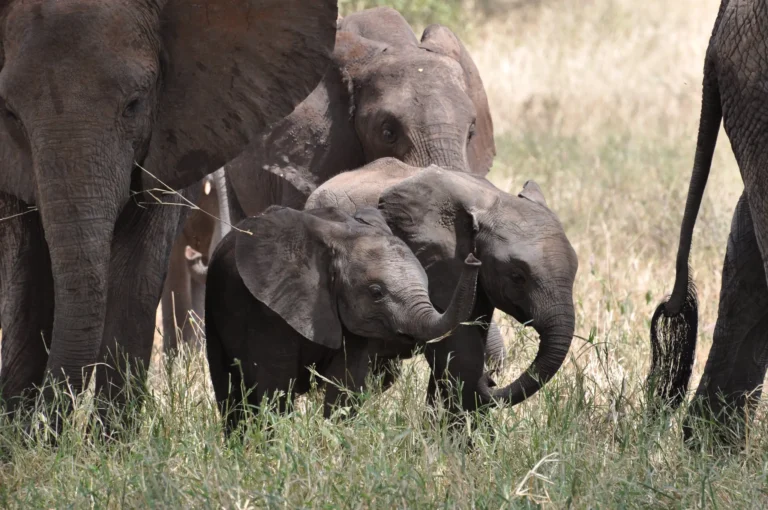The Great Migration in Serengeti: Nature’s Most Epic Journey
A Complete Guide to the Wildebeest Migration Safari
The Wildebeest Migration is often referred to as “The Greatest Show on Earth.” It is a breathtaking, year-round movement of over 1.5 million wildebeests, accompanied by hundreds of thousands of zebras and gazelles, across the vast plains of Tanzania and Kenya. This natural wonder is not just a migration; it is a story of survival, instinct, and an unbreakable cycle of life.
This guide provides a detailed breakdown of the migration, including when and where to go, what to expect, how to plan, and essential tips for experiencing this incredible phenomenon firsthand.
Why Do Wildebeests Migrate?
The migration is not a random movement but a highly structured, survival-driven journey dictated by environmental factors, food availability, and the instinctual need to reproduce. Understanding why the herds move can enhance your safari experience.
- The Search for Fresh Grazing Lands and Water: Wildebeests are grazing herbivores, meaning they rely on nutrient-rich grasses for sustenance. The migration is primarily driven by rainfall patterns, as fresh grass sprouts with the rains. The herds instinctively follow these patterns, ensuring they have access to the best food sources throughout the year.
- The Role of Instinct and Survival: The migration is deeply ingrained in the genetic code of wildebeests. Despite the dangers—from predators like lions and crocodiles to natural obstacles like rivers and droughts—the urge to move persists. It is an evolutionary mechanism that has ensured the species’ survival for thousands of years.
How Does the Wildebeest Migration Work?
The migration is a continuous cycle, meaning it never truly begins or ends. The herds move in a circular pattern between the Serengeti National Park in Tanzania and the Maasai Mara in Kenya, following a predictable yet slightly variable route.
The Endless Cycle – Birth, Survival, and Movement
The migration follows a general timeline:
- Calving Season (January–March) – The birth of thousands of wildebeest calves in southern Serengeti.
- The Journey North (April–June) – The herds begin their trek northward as food becomes scarce.
- The Mara River Crossings (July–October) – The most dangerous part of the journey, where wildebeests face crocodile-infested waters and strong currents.
- Returning South (November–December) – As the dry season ends, the herds head back toward the lush Serengeti plains.
What Guides the Wildebeests?
Three main factors dictate the direction and movement of the migration:
- Rainfall and Grass Growth: Wildebeests instinctively follow the rains, ensuring access to fresh grazing lands.
- Predators and Threats: Natural dangers like lions and crocodiles influence herd behavior, often leading to frantic, unpredictable movements.
- Topography and Water Sources: Rivers and landscapes dictate possible routes, with some crossings becoming bottlenecks of intense wildlife activity.
Can the Migration Be Predicted?
While the general cycle remains the same, the exact timing and location vary each year based on rainfall patterns. This unpredictability adds to the excitement of witnessing the migration firsthand.
When Is the Best Time to Witness the Wildebeest Migration?
The best time to experience the migration depends on what aspect of the journey you want to witness.
- Calving Season – New Beginnings in Ndutu (January–February)
The southern Serengeti and Ndutu region become the heart of new life as over 500,000 wildebeest calves are born within weeks. However, this attracts predators like lions, cheetahs, and hyenas, making it a high-action period.
- The Dramatic Mara River Crossings (July–October)
One of the most spectacular and heart-pounding moments of the migration occurs when the herds must cross the Mara River. Hundreds of wildebeests fall prey to crocodiles, drowning, or exhaustion in the process. Witnessing these crossings is considered the holy grail of safari experiences.
- The Return South – Moving Toward the Green Plains (November–December)
As the rainy season begins, the herds make their way back to the Serengeti, replenishing their energy for the next cycle. This period offers lush landscapes, fewer crowds, and incredible game viewing.
Types of Wildebeest Migration Safaris
Choosing the right safari experience is crucial for getting the most out of your trip.
- Private Safaris – Tailor-Made Adventures
For those seeking a personalized experience, private safaris offer customized itineraries with expert guides, luxury lodges, and exclusive wildlife viewing.
- Group Safaris – An Affordable Adventure
Group safaris provide a social and cost-effective way to experience the migration with like-minded travelers.
- Luxury Mobile Camps – Following the Herds in Style
Luxury mobile camps move with the migration, offering prime access to key locations without sacrificing comfort.
What to Pack – Essential Safari Checklist
A well-packed bag can enhance your experience. Items to consider include:
- Lightweight, neutral-colored clothing
- Binoculars for close-up wildlife viewing
- A high-quality camera with extra batteries
- Sunscreen, a hat, and insect repellent
Travel Logistics – Visa Requirements and Flights
Visitors to Tanzania and Kenya typically require a visa, which can be obtained online or on arrival. International flights land in Kilimanjaro International Airport (JRO) or Jomo Kenyatta International Airport (NBO).
Choosing the Right Safari Vehicle
Safari vehicles range from open-roof 4x4s for immersive viewing to luxury air-conditioned options for added comfort.
Start Planning Your Wildebeest Migration Safari
Book Your 2025 Wildebeest Migration Adventure: Plan ahead and secure your spot early to ensure the best locations for witnessing the migration.







